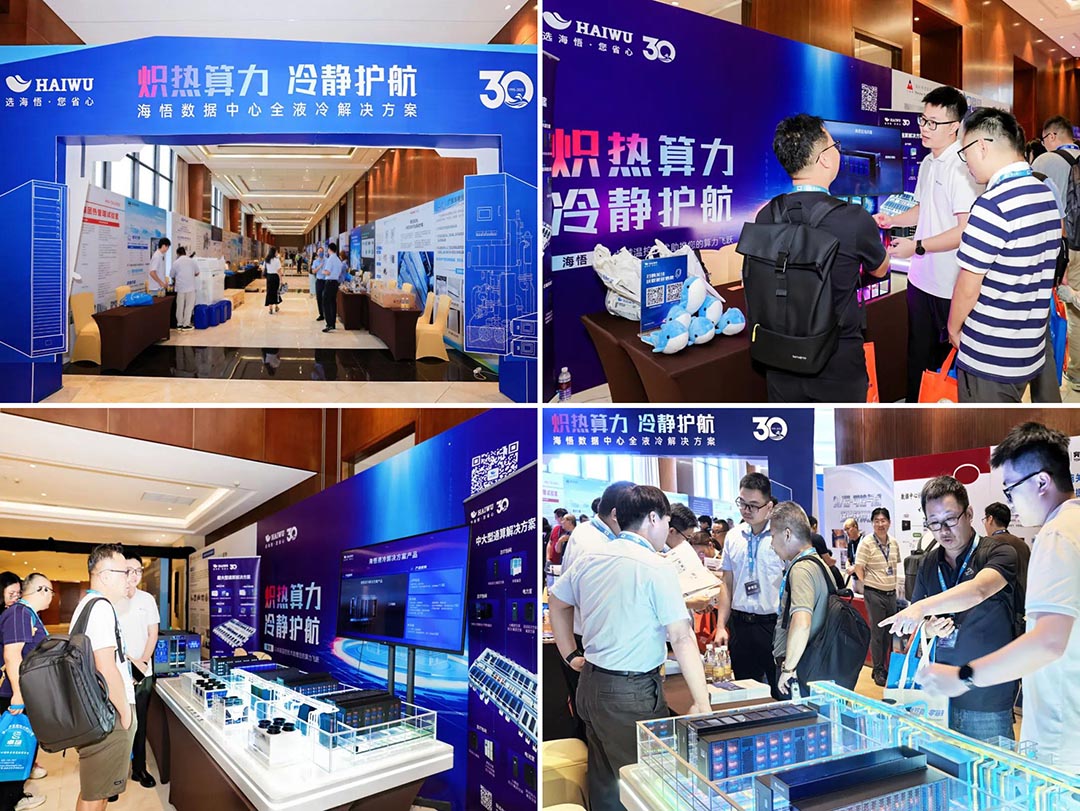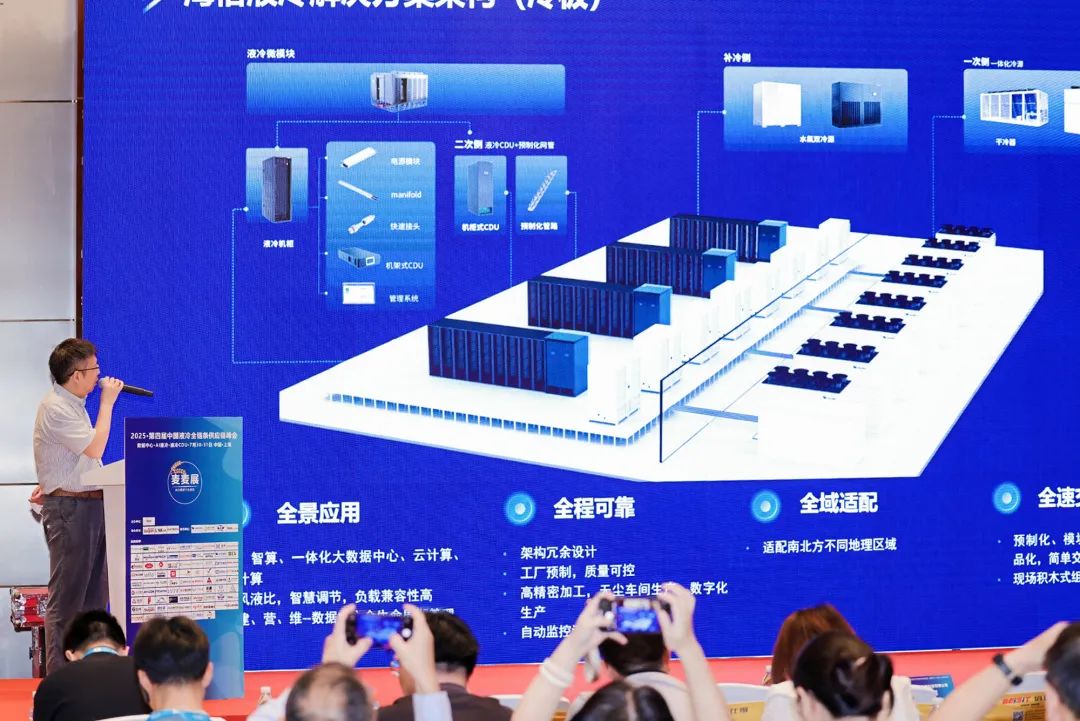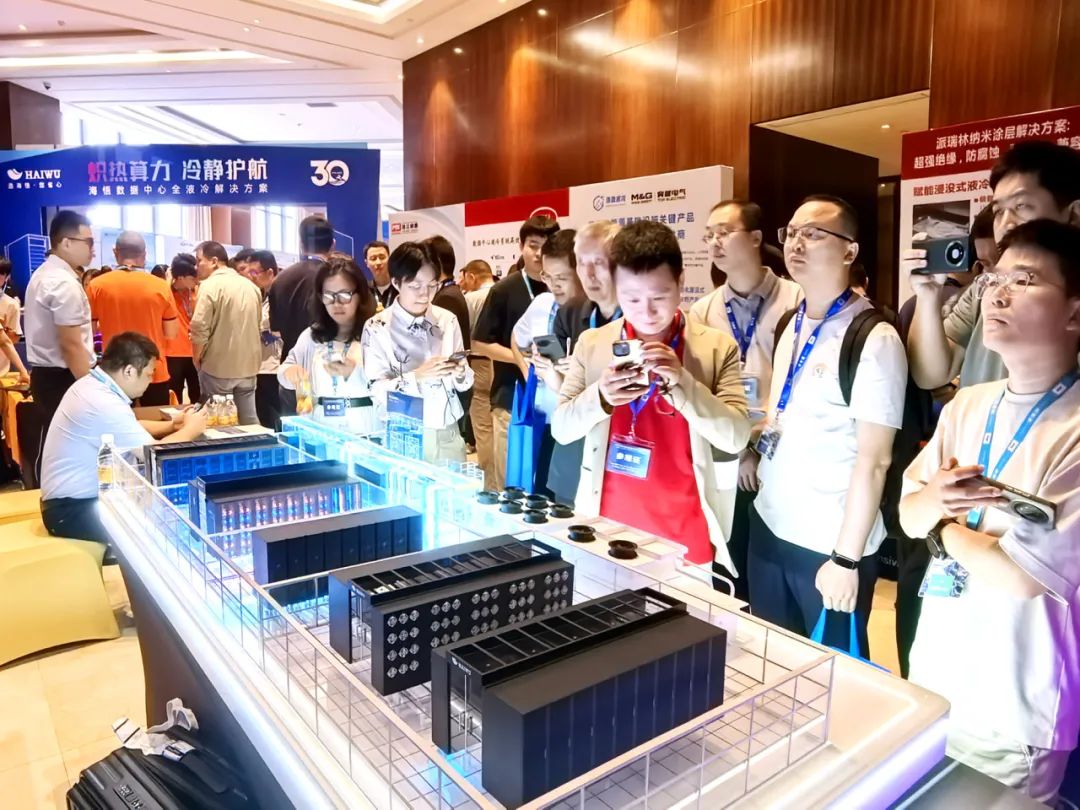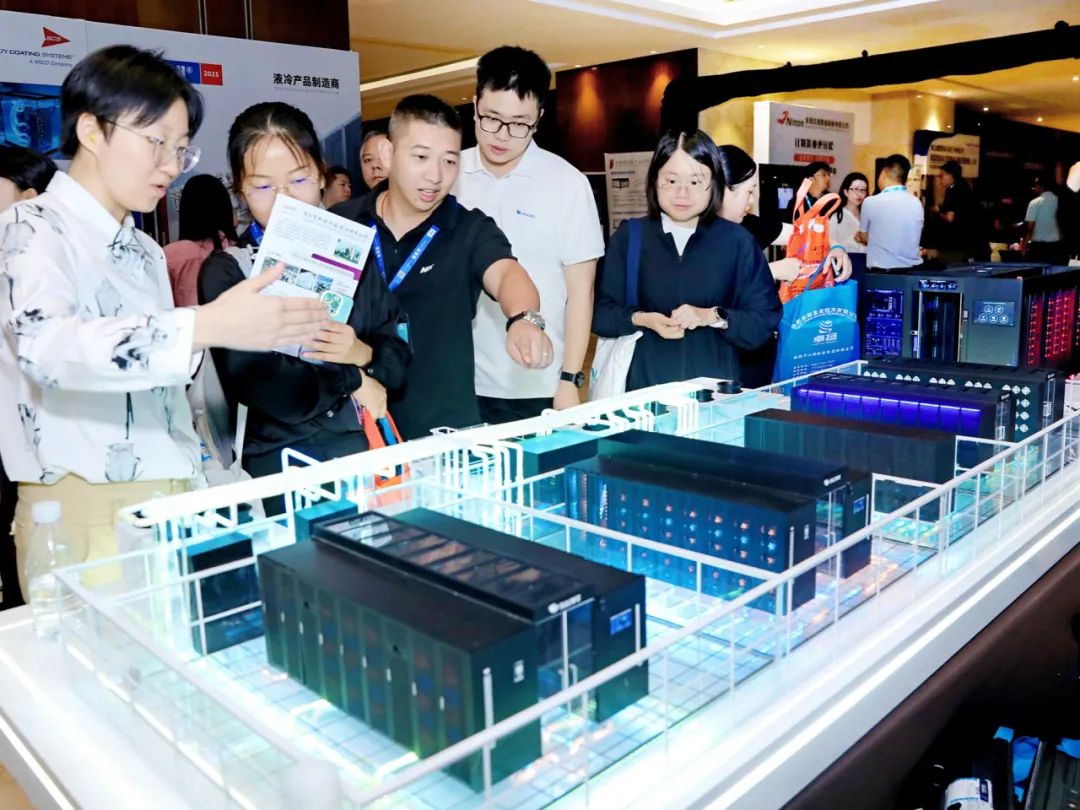
From July 30th to 31st, the 4th China Liquid Cooling Full Chain Supply Chain Summit was held in Shanghai. The conference brought together experts, scholars and enterprise representatives from data centers, servers, chip thermal management and other fields to talk about the evolution trend and ecological collaboration of liquid cooling technology.
Xia Yuyang, marketing director of data center liquid cooling solutions, delivered a keynote speech entitled "Full-stack Practice and Zero Carbon Transition of Liquid Cooling Technology" at the forum, systematically expounding Haiwu's practical achievements in technical system construction, product architecture innovation and multi-scenario implementation, which received widespread attention on the spot.
The inflection point of wind liquid has arrived, and liquid cooling has moved from "optional" to "mandatory"
With the rapid rise in power density of the new generation of computing power chips, air-cooled solutions are no longer able to meet the cooling needs of future computing loads. AI chips represented by GB200 have risen to an average power density of 98W/cm², far exceeding the upper limit of what air cooling can carry. For high-density cabinets (with a single cabinet power of more than 30kW), wind-liquid fusion and full liquid cooling solutions have significantly outperformed pure air-cooled models in terms of TCO. At the same time, national policies have put forward stricter requirements for the PUE of new and renovated data centers, and liquid cooling is accelerating from "optional" to "mandatory".

From components to systems Create a full-stack technology closed loop for liquid cooling
Based on complete R&D, manufacturing and service capabilities, Haiwu has built a three-level collaborative liquid cooling system covering components, architecture and ecology, providing continuous technology evolution support, flexible solution adaptation capabilities and efficient delivery guarantee for high-density computing power scenarios.
In his speech, Xia Yuyang focused on Haiwu's cold plate liquid cooling solution, emphasizing that Haiwu continues to promote optimization in key technical directions such as cold plate structure design, material selection and local heat exchange enhancement, and continuously improves the heat exchange efficiency and operational reliability of the cooling core of liquid-cooled servers.
For the needs of different scenarios, Haiwu has built two deployment architectures: wind-liquid fusion and full liquid cooling at the system level. The main wind-liquid fusion solution supports 3:7 or 2:8 flexible adjustment of wind-liquid ratio, flexibly adapting to different load characteristics and computing power deployment scenarios.

On the manufacturing side, Haiwu liquid cooling factory has built full-stack solution manufacturing capabilities covering cold plates, manifolds, stainless steel pipelines, CDUs, liquid-cooled cabinets and outdoor cooling sources. It runs through the whole process of design, processing, assembly and testing, and fully supports the large-scale delivery and high-reliability operation of liquid cooling solutions.
From factory to site, prefabrication drives delivery speed
In response to the pain points of industries with long deployment cycles and high engineering complexity of liquid cooling, Haiwu promotes the highly prefabricated design of liquid cooling solution products with the guidance of "engineering productization". The liquid-cooled double-row micromodule and container solution can be assembled in the field to support rapid deployment, meet the needs of rapid business launch, improve customer TCO returns, and take into account the flexibility of deployment and later expansion capabilities.


Haiwu's liquid cooling full-scenario solution has received widespread attention
Liquid cooling technology is reshaping the data center thermal management ecosystem with disruptive advantages such as density breakthroughs, energy efficiency leaps, and low-carbon revolutions. Relying on full-stack capabilities, Haiwu will continue to promote the upgrading of liquid cooling technology from point applications to system-level solutions for future computing infrastructure, help customers calmly respond to high-density computing power challenges, inject green momentum into cutting-edge fields such as AI large models, and promote the high-quality and sustainable development of the digital economy.

